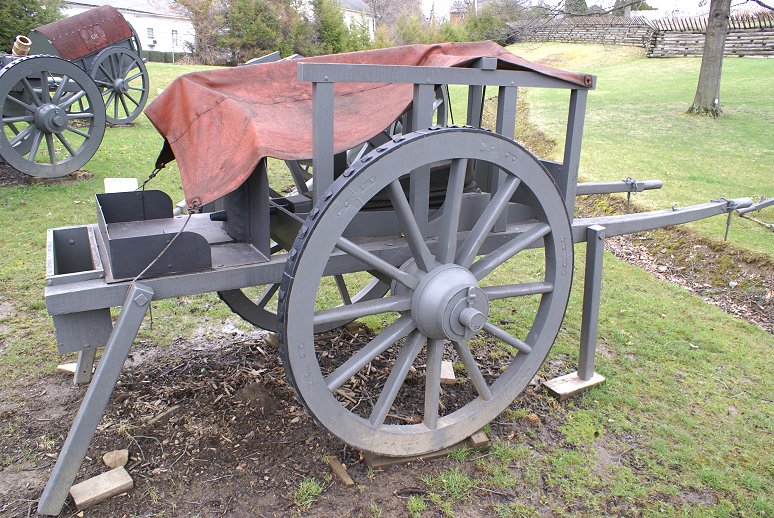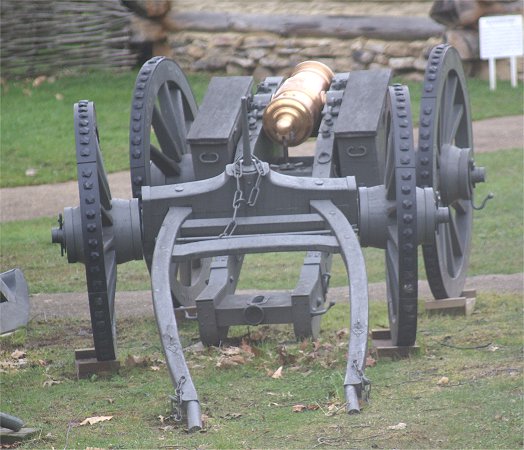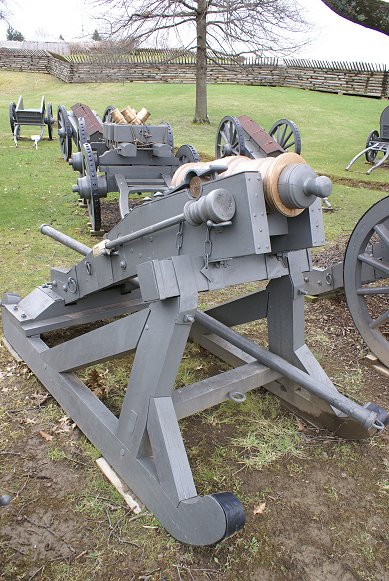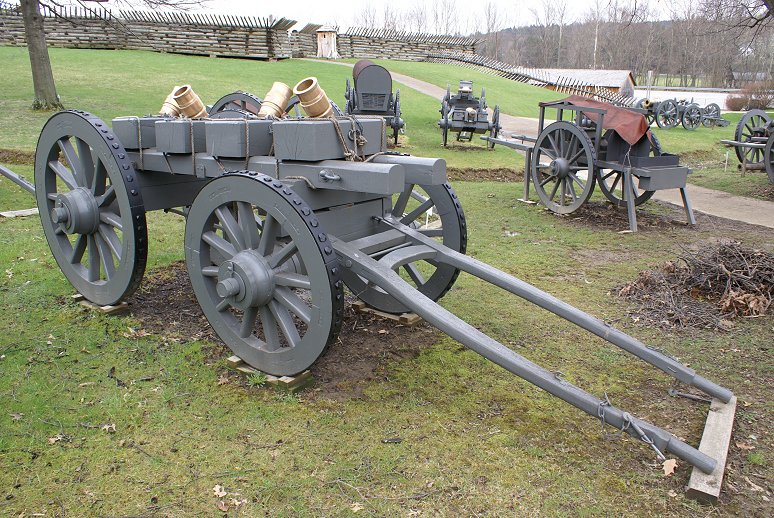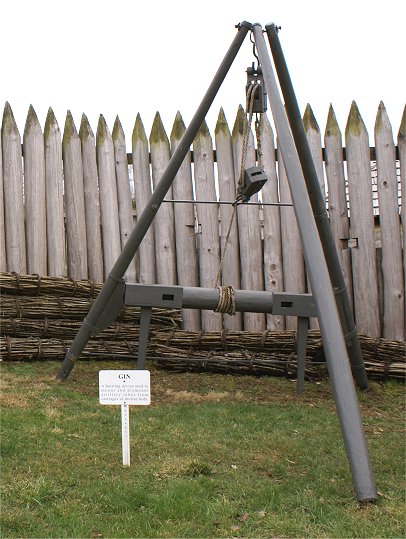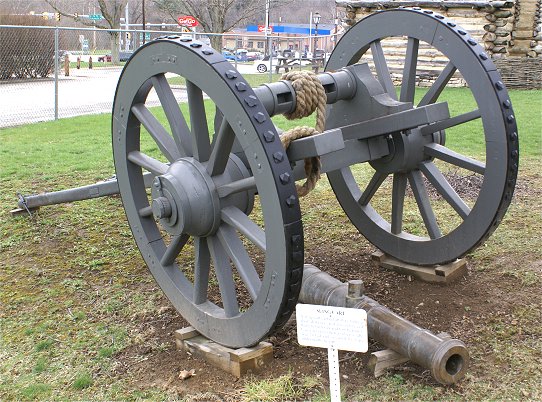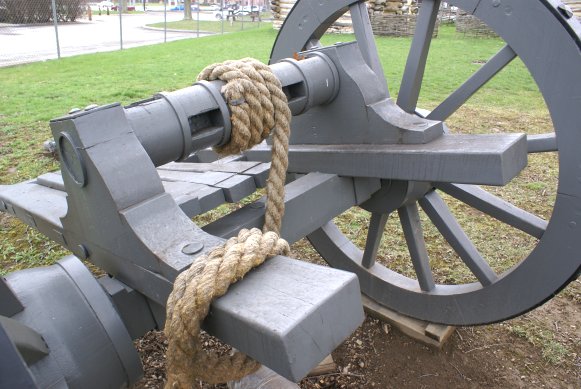
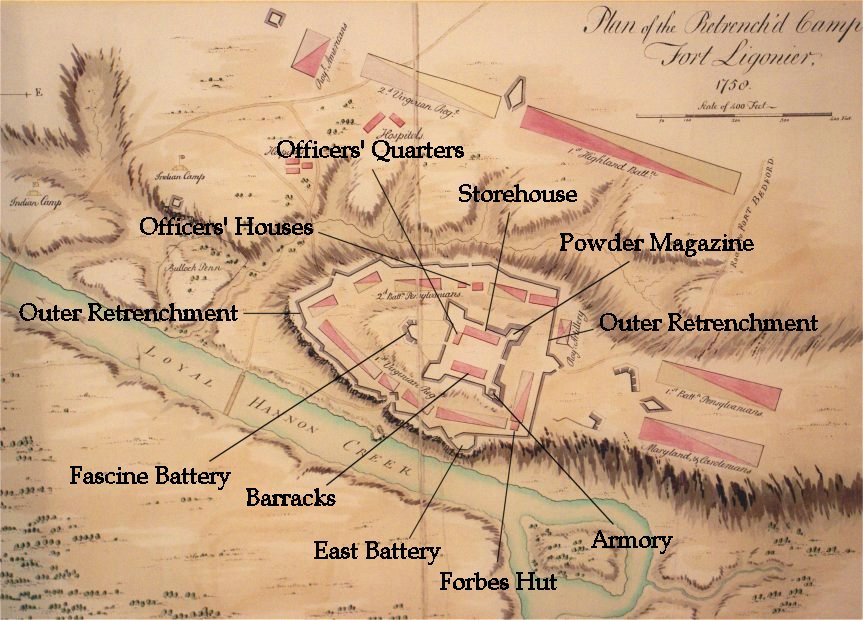

 |
 |
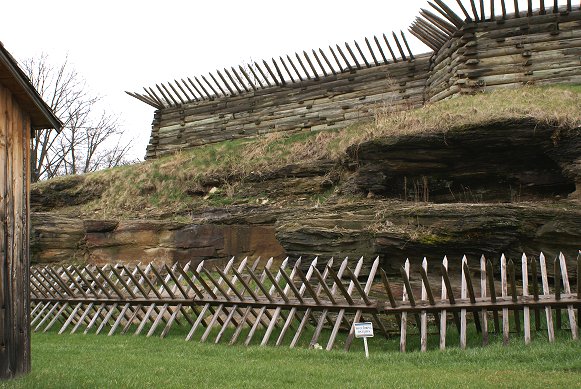
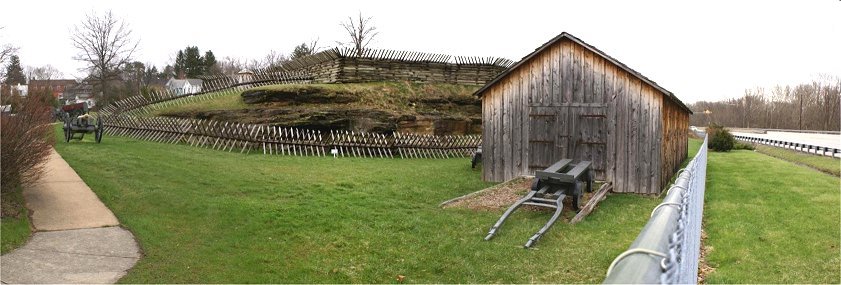




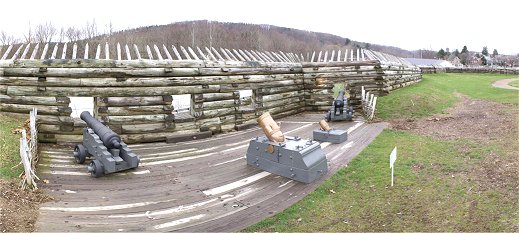



| We just came through the gate at left-center in the above photo. The Fascine Battery
itself is at right-center. The triangular device at left is a gin,
used to lift artillery barrels off their carriages. Also note the two
sunken mortar pits. The photo at right shows several fascines in the foreground and another view of the stockaded ditch in front of the battery. Now let's go inside the square fort. |
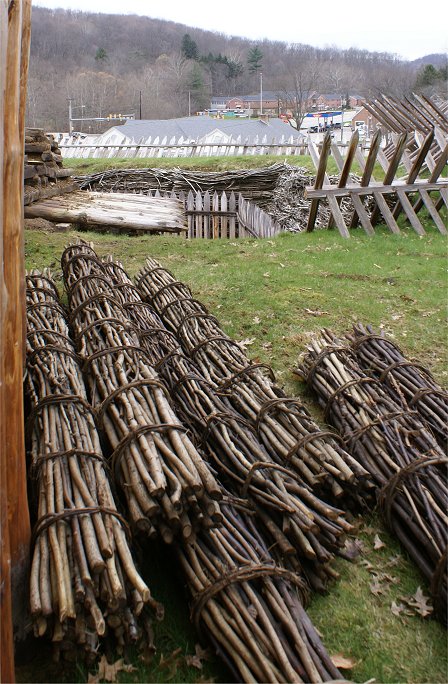 |

| We just came through the gate on the right of the panorama.
This gate passes through the
stockade portion of the square bastioned fort. The gate at left
passes
through a much more substantial wall. (See photo at right.)
Inside the square fort is a storehouse, a barracks, officers'
quarters, officers' mess, an armory, and the powder magazine. |
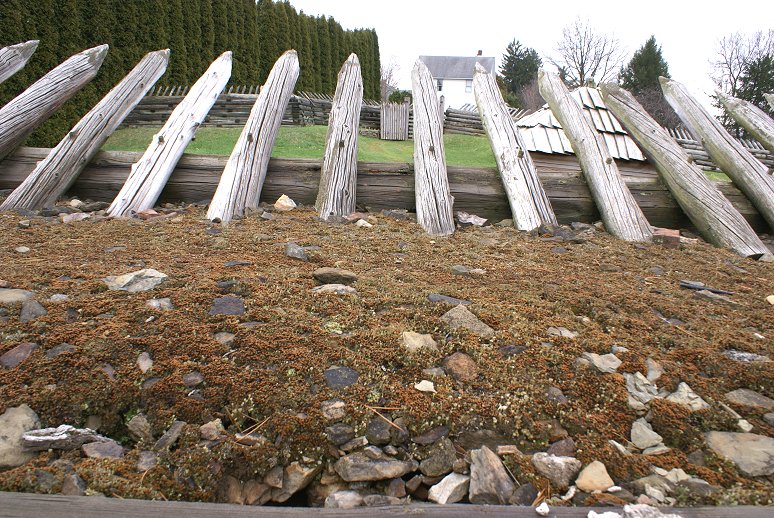 |
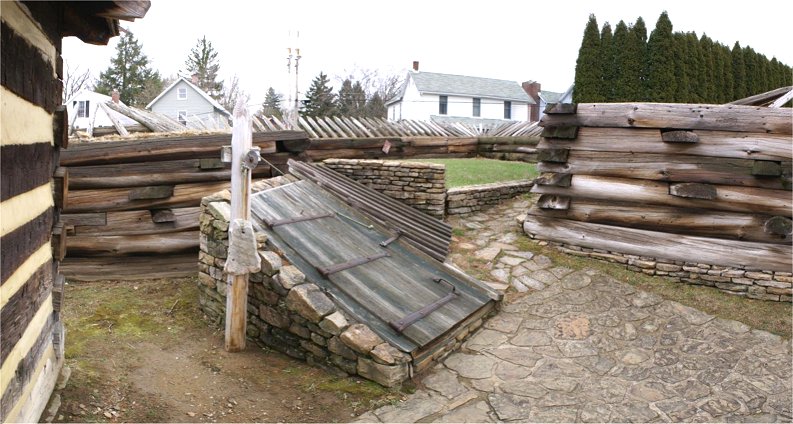

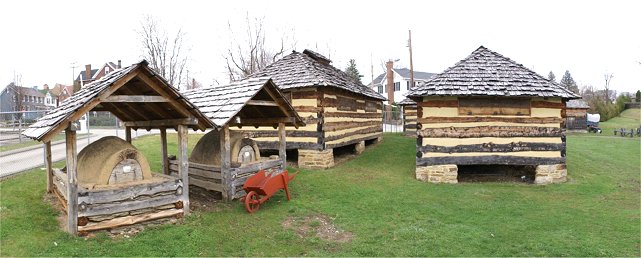
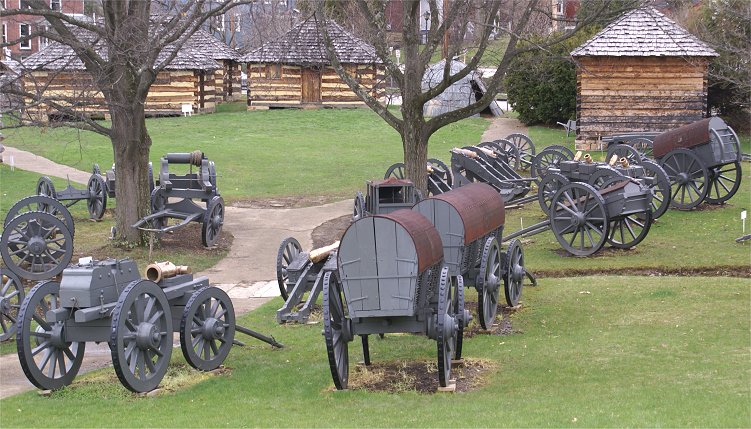
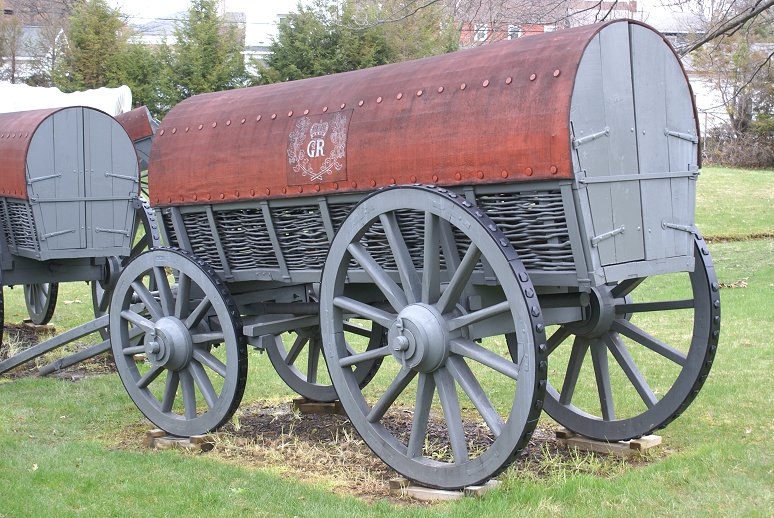
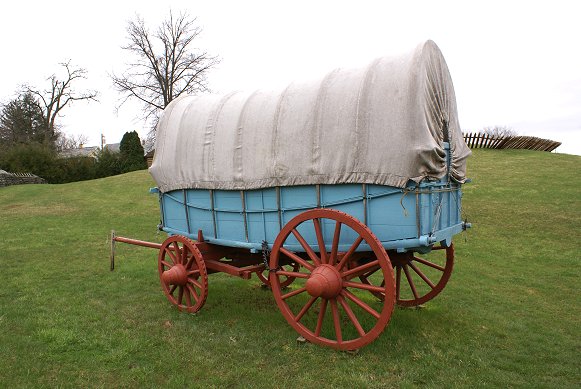 |
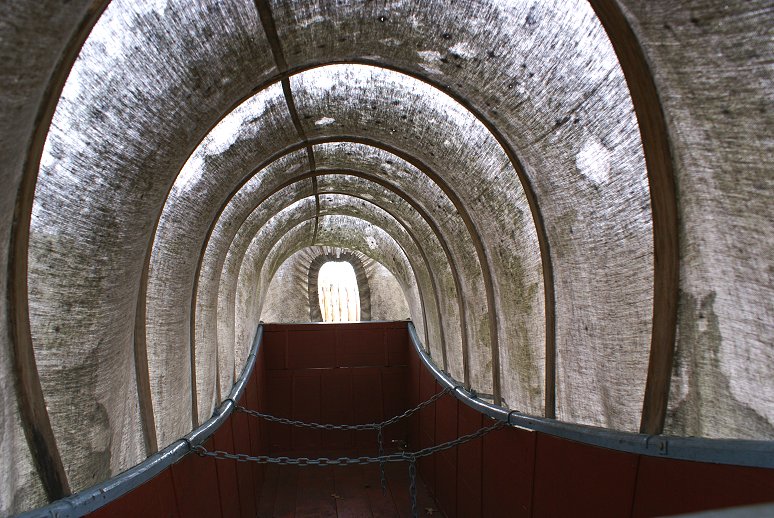 |

